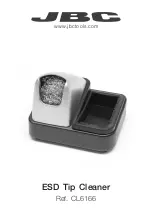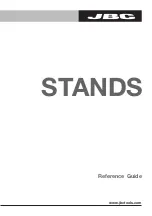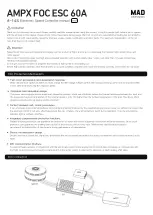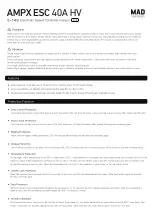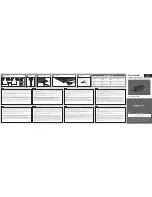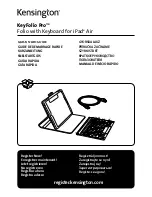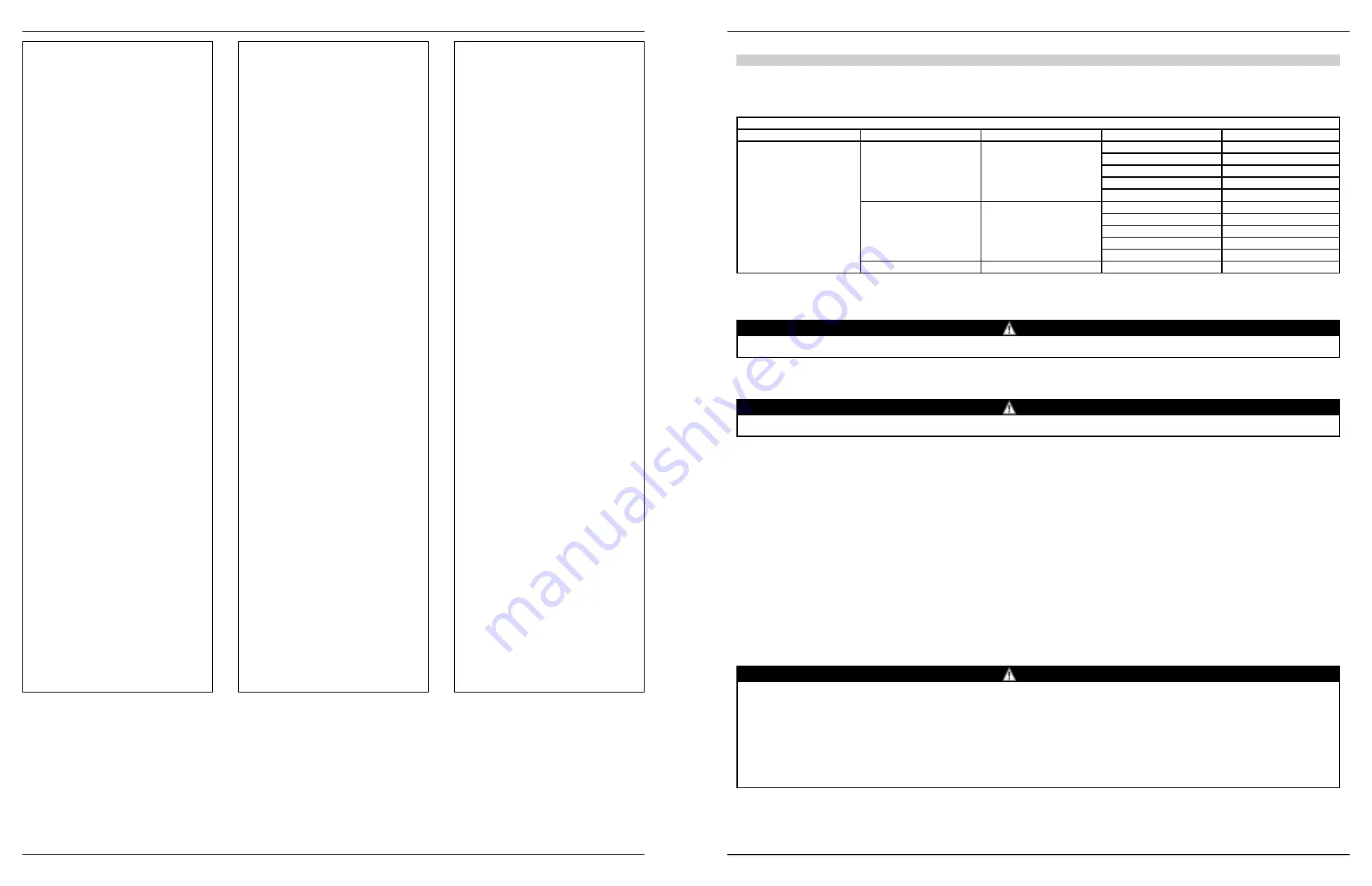
Page 18
Page 19
© 2018 MSA
© 2018 MSA
P/N 10147049
P/N 10147049
日本語 (JP)
1.
MSA Workman Winch ウィンチ(ハンドル側
から見た図)
2.
ウィンチのライン
3.
ドラム
4.
ブラケット
5.
設置ラベル
6.
情報ラベル
7.
ウィンチのクランクハンドル
8.
ハンドルのラベル
9.
折り畳み可能ハンドル
10.
ハンドルホルダー
11.
輸送用ハンドル
12.
スナップフック
13. RFID
14.
MSA Workman Winch ウィンチ(背面図)
15.
MSA ロゴ
16.
指示ラベル
17.
MSA Workman Tripod 三脚、
MSA Workman Winch ウィン
チ、MSA Rescuer
18.
用途説明
19.
モデル番号
20.
ライン素材
21.
ラインの長さ
22.
製造日付
23.
シリアル番号
24.
点検グリッド
25.
規格に適合
26.
取り外し禁止ラベル
27.
設置
28.
電気を避けてください
29.
フィールドでの修理禁止
30.
最大人員荷重
31.
最大吊荷荷重
32.
直射日光および雨禁止
33.
最高および最低温度
34.
各使用前に点検
35.
取扱説明書をお読みください
36.
端に注意
37.
ラベル
38.
設置ラベル
39.
ハンドル操作ラベル
40.
カラビナ
41.
プーリー
42.
MSA Workman Tripod 三脚
43.
毎回の使用の前後に点検を行い、損傷、
不具合、動作不良が見つかった場合は、
使用を止めてください。
BAHASA INDONESIA (ID)
1. Derek MSA Workman Winch
(tampilan dari samping gagang)
2. Tali Derek
3. Drum
4. Braket
5. Label Pemasangan
6. Label Informasi
7. Gagang Engkol Derek
8. Label Gagang
9. Gagang Lipat
10. Penahan gagang
11. Gagang pembawa
12. Kait hentak
13. RFID
14. Derek MSA Workman Winch
(tampilan terbalik)
15. LOGO MSA
16. Label Petunjuk
17. Tripod MSA Workman Tripod,
Derek MSA Workman Winch, dan MSA
Penolong
18. Peragaan Aplikasi
19. Nomor Model
20. Bahan Tali
21. Bahan Tali
22. Tanggal Pembuatan
23. Nomor Seri
24. Grid Pemeriksaan
25. Memenuhi standar
26. Jangan Lepas Label
27. Pemasangan
28. Hindari listrik
29. Perbaikan di Lapangan Tidak Diizinkan
30. Kapasitas Orang Maksimal
31. Kapasitas Bahan Maksimal
32. Hindari Sinar Matahari dan Hujan
Langsung
33. Suhu Maksimal dan Minimum
34. Periksa Sebelum Digunakan
35. Baca Panduan
36. Hindari Pinggiran
37. Label
38. Label Pemasangan
39. Label Pengoperasian Gagang
40. Carabiner
41. Puli
42. MSA Workman Tripod
43. Periksa sebelum dan sesudah penggu-
naan dan jangan gunakan jika terdapat
kerusakan, cacat, atau kesalahan
fungsi.
ไทย (TH)
1. MSA Workman Winch (ภาพจากด้านด้ามจับ)
2. สายกว้านสลิง
3. ดรัม
4. ขายึด
5. ฉลากแสดงข้อมูลการติดตั้ง
6. ฉลากแสดงข้อมูล
7. ด้ามจับข้อเหวี่ยงกว้าน
8. ฉลากที่ด้ามจับ
9. ด้ามจับแบบพับได้
10. ที่เก็บด้ามจับ
11. หูหิ้ว
12. หัวเกี่ยว
13. RFID
14. MSA Workman Winch (ภาพด้านหลัง)
15. โลโก้ของ MSA
16. ฉลากค�าแนะน�า
17. MSA Workman Tripod, MSA Workman Winch, ช่วย MSA
18. การสาธิตวิธีการใช้งาน
19. หมายเลขรุ่น
20. วัสดุที่ใช้ผลิตสายกว้าน
21. ความยาวของสายกว้าน
22. วันที่ผลิต
23. หมายเลขประจ�าเครื่อง
24. ตารางข้อมูลการตรวจเช็คสภาพเครื่อง
25. ตรงตามมาตรฐาน
26. ห้ามดึงฉลากออก
27. การติดตั้ง
28. หลีกเลี่ยงบริเวณที่มีไฟฟ้า
29. ไม่อนุญาตให้ซ่อมภายในไซต์งาน
30. น�้าหนักสูงสุดของบุคคล
31. น�้าหนักสูงสุดของวัสดุ
32. หลีกเลี่ยงแดดจ้าและฝน
33. อุณหภูมิสูงสุดและต�่าสุด
34. ตรวจเช็คสภาพก่อนใช้แต่ละครั้ง
35. อ่านคู่มือ
36. ระวังขอบ
37. ฉลาก
38. ฉลากแสดงข้อมูลการติดตั้ง
39. ฉลากแสดงวิธีใช้ด้ามจับ
40. ห่วงเอนกประสงค์
41. พูลเลย์
42. ขาตั้งกว้านสลิงมือหมุนของ MSA
43. ตรวจสอบทั้งช่วงก่อนและหลังการใช้งานแต่ละครั้ง และเลิกใช้
อุปกรณ์หากพบว่าอุปกรณ์ช�ารุดเสียหาย มีข้อบกพร่องหรือท�างาน
ขัดข้อง.
ENGLISH
INSTRUCTIONS FOR USE
1. MSA Workman Winch description
The MSA Workman Winch is suitable for lifting, lowering and positioning either personnel or materials. It is not to be used as a fall arrest device. It is designed for use in conjunction
with MSA anchorage connectors, fall arresters and other components to make up complete systems for personnel riding, work positioning, emergency rescue and evacuation. MSA
components are available to provide backup fall arrest for all such systems. MSA Workman Winch accompanied with MSA Workman Tripod can be used in vertical direction.
The line lengths of MSA Workman Winch are available in 10 m, 15 m, 20 m, 25 m and 30 m, see table for detailed information of these configurations.
LINE CONSTRUCTION
Product Name
Material
Line Size
Length
P/N
MSA Workman Winch
Non-rotatable Stainless Steel
5 mm dia.
10 m
10147566
15 m
10147567
20 m
10147296
25 m
10154687
30 m
10154688
Galvanized Steel
5 mm dia.
10 m
10153828
15 m
10153829
20 m
10153830
25 m
10154689
30 m
10154690
Synthetic Rope
6 mm dia.
20 m
10148278
(1) Description of Winch: The winch is designed for use with the MSA Workman Tripod (figure 17). It may also be used with other anchorage connectors approved by MSA. The
winch serves as the primary lifting-lowering device for systems which use the tripod to position equipment for confined space entry above the area to be accessed. The winch mounts
to the side of the tripod leg. This position permits operation of the winch by a surface attendant positioned away from the confined space access point, maximizes the usable space to
the interior of the tripod and increases stability by lowering the tripod’s center of gravity.
CAUTION
When MSA Workman Winch is installed on the MSA Workman Tripod, a pulley and a carabiner are required for rigging the winch line at the center eye of tripod
head. See figure 17.
Note: When using the winch for lifting-lowering of personnel, an independent fall arrest system is required. The MSA retractable Type fall arrester is recommended. Other fall arrest
systems are also available from MSA. (2) Internal mechanisms of the Winch are protected by robust plastic housings. All parts are zinc plated or stainless steel to resist corrosion.
The load end of the line is terminated with a self-locking swivel snaphook which requires two separate and distinct manipulations to unlock and open the snap gate. When released,
the snap gate will automatically close and lock.
CAUTION
The user should prevent the buildup of slack line that would allow free fall. To prevent loose coils of line on the drum, always maintain at least 6.75 kg of tensi-
on on the line when paying it out.
The winch is normally operated with the standard manual crank handle shown in figure 1. To extract line or lower a load, rotate the handle in a counterclockwise direction. To retract
line or raise a load, rotate the handle in a clockwise direction. To suspend a load, release the handle. A brake in the drive mechanism inhibits the drum from free wheeling. The brake
operates even when the manual force is removed.
2. Specification:
All MSA Workman Winch embody several standard features: (1) Rated working load 140 kg for personnel and 225 kg for material. (2) An open drum wound with
5 mm steel cable or 6 mm synthetic rope. (3) Built in shock absorber. (4) Clutched drive to prevent winch overload, and reduce the possibility of injury to a person if snagged on a
structural member during lifting. (5) Double-braking system. (6) Robust housing and mounting bracket. (7) Self-locking swivel snaphook. (8) Manual foldable crank handle. (9) Level
Wind Mechanism for a tangle free cable drum. (10) RFID enabled.
3. Training:
It is the responsibility of the purchaser of MSA Workman Winch to assure that product users are made familiar with these user instructions and trained by a competent
person. Ensure that you have been adequately trained in the use of this MSA Workman Winch and make sure that you fully understand how it works.
4. Anchorage requirement:
The anchorage used to suspend the winch for personnel hoisting must be strong enough to support the load with an adequate safety factor. The
required safety factors are 10:1 for personnel and 6:1 for material lifting/lowering. For personnel hoisting, the anchorage must have strength of at least 12 KN. A backup fall arrest
system must be utilized.
5. Rescue plan:
The user must have a rescue plan and the means at hand to implement it; and that plan must take into account the equipment and special training necessary to
effect prompt rescue under all foreseeable conditions. There should be direct or indirect visual contact or some other means of communication with the rescuee at all times during the
rescue process.
6. Compatibility of system parts:
All components (e.g. full body harness, self retractable lanyard, carabiner, snap hook, etc.) connected to this MSA Workman Winch MUST be
compatible. MSA Workman Winch is designed to be used with MSA approved components and connecting subsystems. Use of the MSA Workman Winch subassembly with products
made by others that are not approved in writing by MSA may adversely affect the functional capability between system components and reliability of the complete system. Contact
MSA with any questions or for further information.
7. Physical limitations:
Good physical condition is necessary in order to carry out work at a height. Certain medical conditions can threaten the users’ safety during normal use of
MSA Workman Winch and in emergencies (taking medications, cardiovascular problem, etc.). In any case of doubt, consult your physician before using. Pregnant women and minors
MUST NEVER use the MSA Workman Winch.
8. Operation of the Winch:
(1) Personnel using the Winch for lifting/lowering/positioning must have a backup fall arrest system, such as a MSA Rescuer or MSA RTFA (Retractable
Type Fall Arrester), plus a full body harness to EN 361 (Customs Union Technical Regulation TP TC 019/2011 ;Ukrainian standard: ДСТУ EN 361:2008). When using the Winch for
personnel, never have more than one person on the Winch at the same time. Never carry personnel and materials at the same time.
CAUTION
(1) Never leave a load hanging from the Winch while the Winch is unattended. (2) Always be sure the line is pulling straight out from the Winch drum–never at an
angle. (3) Never exceed the maximum rated personnel loads listed on the Winch specification label. (4) Never alter the mechanics of the Winch. (5) Never use two or
more Winch to raise or lower a personnel load. Personnel load shifting may place the entire load on one Winch, causing sequential failure of both units. (6) Each time
a load is lifted; first test the Winch by lifting the load a few inches. (7) Always keep hands away from pinch points around load-bearing lines, pulleys and drums du-
ring operation. (8) Always ensure level winding when extracting or retracting line by guiding the line. Use a gloved hand when guiding the line to avoid cuts and wire
slivers. Continually inspect for level winding during operation. (9) It is critical that the Winch operator remain a safe distance away from any fall hazard or personnel
load which could cause injury in the event of a loss of balance on the part of the operator, or in the event of a personnel load fall. When operating the Winch in a fall
hazard area, the operator must wear appropriate fall protection equipment connected to an independent anchorage. (10) All labels must be visible and the operator
should never come between the Winch housing and line. The Winch operator must always operate the Winch with the housing and crank between him or her and
the personnel load. (11) Never install the Winch where any member of the work crew must be stationed in line with a tensioned Winch line. Should the line fail, stored
energy may cause recoil of the line with sufficient force to cause serious or fatal injury.
ENGLISH




























